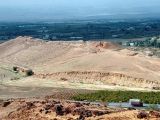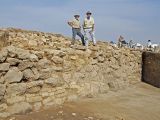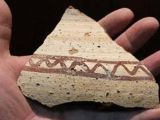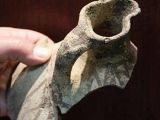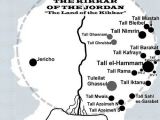Researcher Steven Collins of Trinity Southwest University and fellow historians have been excavating a site in Jordan for years now. In a recent interview with Popular Archaeology, the team detail the discovery of many ancient structures and artifacts at this site, which they call Tall el-Hammam.
The structures and the artifacts hint that, millennia ago, what is now the archaeological site of Tall el-Hamman was a thriving city-state of no mean size. In fact, archaeologist Steven Collins and his colleagues say the settlement, dating back to between 3,500 to 1,540 BCE, is shaping up to be one of the largest dominating the region in ancient times.
What's interesting is that, if the research team is right about its size and age, this recently unearthed Bronze Age city-state in Jordan might just be the biblical Sodom, supposedly destroyed by God in a fiery calamity for being too wicked and depraved. It was just the Lord doing some cleaning, if you will.
The archaeologists do make a strong point
In the Bible, Sodom is described as a kingdom located in the Jordan River plain, just north of where the Dead Sea sits. One of the largest cities in the region, it sat on a common trade route and it was inhabited by thousands of people. Being as big and as prosperous as it was, it had thick walls and towers around it. These were built to keep any potential invaders at bay.
Sure enough, the ancient city dug up by Steven Collins and his archaeological team is nothing if not gargantuan. The researchers say it's about ten times bigger than any of the other Bronze Age settlements so far discovered in the region. It also sits in the Jordan River plain and so it makes sense to assume that it might be the biblical Sodom.
“Tall el-Hammam seems to match every Sodom criterion demanded by the text,” Steven Collins said in a statement. “The site is monstrous,” he added. Interestingly, archaeological evidence also hints that, just like Sodom was wiped out all of a sudden, this city was abandoned by its people for no apparent reason sometime towards the end of the Middle Bronze Age.
The team has unearthed complex infrastructure
Impressive size aside, it would appear that this ancient city dug out by the archaeological team headed by Steven Collins also had a rather complex and intricate topography. For one thing, the researchers have discovered a city wall built sometime during the Early Bronze Age, i.e. 3,500 to 2,350 BCE, and measuring as astounding 5.2 meters (17 feet) in thickness and 10 meters (33 feet) in height.
Made of mud bricks, this wall came complete with towers and massive gates. Then, during the Middle Bronze Age, new infrastructure was added to the city. Thus, there is evidence of a mammoth defensive rampart system, also made of mud bricks.
“It was an impressive and formidable defensive system protecting the residences of the wealthier citizens of the city, including the king's palace and related temples and administrative buildings,” said Steven Collins. For the time being, the team aren't sure why the city was abandoned in the late Middle Bronze Age. They hope that, as they continue to dig, they'll find more clues about its demise.
Even if the city isn't Sodom, the archaeologists are quite pleased with their work. After all, it's not everyday such gargantuan ancient cities pop out of the ground to rewrite history. “What we’ve got on our hands is a major city-state that was, for all practical purposes, unknown to scholars before we started our project,” explained Steven Collins.
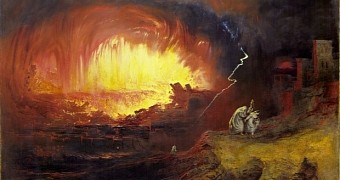
 14 DAY TRIAL //
14 DAY TRIAL // 
